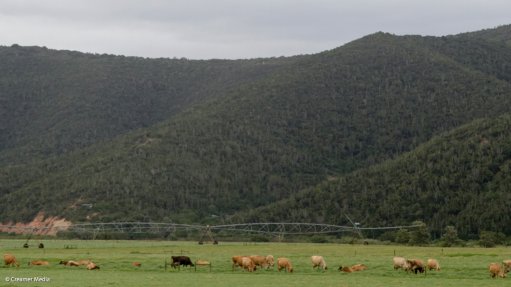
Photo by: Duane Daws
Farmers must not be blinded by the bells and whistles of technology, understanding that the blind adoption of precision farming technology will not make them better farmers.
“In a long-term business like farming, technology isn’t a short cut to success. It’s a partner that makes the long haul easier,” said Standard Bank head of agribusiness Nico Groenewald in a statement this week.
Although technology had the ability to increase yields and improve the quality of an operation’s output, it was a tool, much like a tractor or even a pitchfork; it needed to support rather than dominate a farm.
Technology could also impede operations if not part of an integrated plan.
“Too often, technology is implemented in a haphazard way, either costing more than the benefits it should have provided or actually getting in the way of normal operations,” notes Groenewald, emphasising that farmers needed to weigh the pros and cons carefully, in the context of their overall planning.
However, he highlighted that some Standard Bank clients had applied technology so astutely that they could forecast their yield per millimetre of water needed.
“They have taken precision farming to its logical conclusion by implementing a range of appropriate technologies across the spectrum of their operations in such a way that what they do in one area of the farm benefits and supports everything else they do.
“However, they’ve achieved this only because they are good farmers. They were successful before they introduced new technologies. They have simply used the technologies to do what they have always done well in more efficient [and] cost-effective ways.
On large farms, technology could often reduce the time and effort needed to do certain tasks, while on smaller farms, the same technology could become a financial burden. It was, therefore, important that a farmer conducted proper market research and chose technology that was best aligned with his/her business.
Technology today was not limited to equipment and computer software and hardware. It also included biological technology in the form of seed and fertilisers, genetics and new methods of breeding for specific attributes in livestock, the production and use of energy – specifically renewable energy – and soil science.
As such, many farmers feared that they needed to become specialists in a range of disciplines to produce just a few outputs, noted Groenewald. “In fact, the only significant change that technology calls for is a whole farm approach that optimises the farmer’s efficiency, including use of water, waste, soil, energy and, most importantly, time.
“Our recommendation, therefore, is that, instead of opting on an ad hoc basis for a piece of technology that seems to address an immediate need, take the time to understand the ripple effect of the choice you are about to make.”
Groenewald advised that farmers needed to get to grips with both the operating and fixed costs of the technologies they wanted. “Ensure that you have the right technology for your specific case and that the costs of that technology will not exceed the advantages it confers.”
He said precision farming was a comprehensive concept, requiring understanding of the full concept and how individual pieces of technology would impact the whole, or how not applying the full range of technologies would impact the whole. “Precision irrigation, for instance, calls for precise application of specific types of fertilisers and particular rhythms of planting of particular crops.”